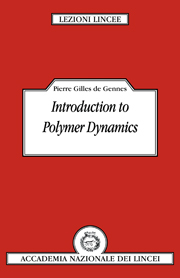2 - Minimum number of aminoacids required to build up a specific receptor with a polypeptide chain
Published online by Cambridge University Press: 07 October 2009
Summary
Introduction
From the point of view of polymer physics, globular proteins are reminiscent of certain polysoaps, where the hydrophobic part of the chain clusters in a central core, while the hydrophilic residues tend to lie on the outer surface (see Stryer, 1968). This conformation provides both stability and solubility. The crucial difference with polysoaps lies of course in the presence of specific receptors on the protein. A schematic representation for such a receptor is shown in Fig. 2.1. The active site directly involves a number p of aminoacids. These are linked together by comparatively long loops of the peptidic chain. As has been emphasized by Monod (1969), it is of some interest to estimate the minimum size required for each of these loops, when the conformation of the active site itself is prescribed. This should lead in particular to one lower bound for the molecular mass of a globular protein carrying one active site.
One possible approach to this problem would be to use Monte Carlo methods on a computer. This, however, (a) is expensive and (b) gives very little insight. Here we shall restrict ourselves to a much more modest, but explicit, calculation, based on rough statistical arguments. We deliberately neglect all the effects related to the hydrophilic/hydrophobic affinities of the aminoacids, although these effects are certainly very important. In the present chapter, we consider first a single loop, inserted in a dense proteic medium.
- Type
- Chapter
- Information
- Introduction to Polymer Dynamics , pp. 17 - 26Publisher: Cambridge University PressPrint publication year: 1990
- 3
- Cited by

